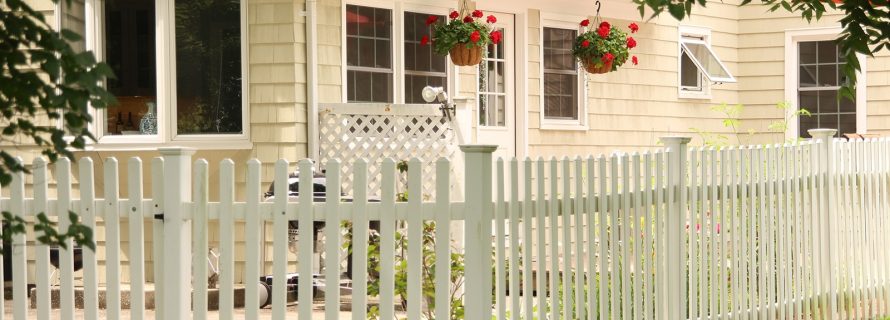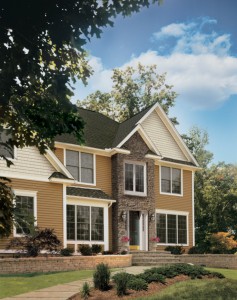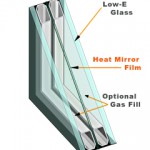Enhance The ROI With Curb Appeal For Your Home

I’m just window shopping they would say when passing any given store or when asked by the retail sales attendant can I help you?  The truth is that New Yorkers and specifically Long Islanders will do plenty of window shopping for replacement windows for their homes. Likely there is one of two reasons that might be why any homeowner would be headed into a remodeling and repair project with new replacement windows. The first is the appeal that your home will have as part of your neighborhood. That curb appeal is easily rejuvenated by changing the style of windows in your home and is why they are a prime target for an exterior upgrade. It instantly enhances the first impression others will have when they see it from the street and can positively impact the benefit you collect in your return on investment at the time you choose to sell.
The truth is that New Yorkers and specifically Long Islanders will do plenty of window shopping for replacement windows for their homes. Likely there is one of two reasons that might be why any homeowner would be headed into a remodeling and repair project with new replacement windows. The first is the appeal that your home will have as part of your neighborhood. That curb appeal is easily rejuvenated by changing the style of windows in your home and is why they are a prime target for an exterior upgrade. It instantly enhances the first impression others will have when they see it from the street and can positively impact the benefit you collect in your return on investment at the time you choose to sell.
Looking back on the history of what used to be a standard window would be a single pane of glass mounted onto a wood frame and secured with a glazing compound. Measured by today’s standards, it is the least efficient product when it comes to protection from the elements. A single pane of glass easily transfers heat or cold and is rarely used in today’s residential building practices.The second reason that might send you window shopping is the performance a replacement window will provide by making your home more comfortable and can help you save money on fuel costs. The right window product can resolve many of the energy related issues of older window technology.
It isn’t that the original windows were poorly manufactured, it is simply the effect of time and weather ultimately lowering the performance your home provides in these challenging times of energy efficiency. The state of the art technology available today in replacement windows is worth a little investigation or to coin a phrase window window shopping. What’s changed is a progression of technologies that has actually been built upon successive improvements to one basic technology. It all started with the idea of using two panes of glass in the same window frame. The simple addition of a second pane provided an air space between the inside surface and the outside surface making what was called a dead air space. The distance between the glass panes allows for a thin layer of air to remain trapped but offers very low heat conduction. It slows the transference of heat or cold significantly when compared to the single pane glass and subsequently, the double pane window was born.
Many consumers are under the false assumption that more dead air space means greater energy efficiency. Interestingly, studies had found that while airspaces less than one half inch are too small to be effective, airspaces greater than five eights of an inch allow air currents to develop between the two panes. Such air movement aids in the transfer of heat between the panes, actually reducing the efficiency. This tight tolerance for improved window technology was first introduced in the United States by the Libby Owens Ford Company in 1935. It wasn’t until 1952 that the first applications to the interior surfaces of double pane glass were introduced to further enhance the efficiency of double pane window products. This newer advanced science was named Low E Glass. The E stands for emissivity, which is the ability of a material to transfer radiant heat. When you reduce the rate of transference in a window product you consequently increase its efficiency.
This was particularly successful with double pane glass as the coatings that reflect different spectrums of light are applied to the interior surfaces. The benefit, besides reducing energy consumption to condition the air inside your home, include the reduction of ultraviolet rays that cause fabrics like carpet and upholstery to fade from sun exposure. This revolutionary advance changed the efficiency of double pane glass by 50%.  Moving forward to 1980 the next and perhaps most significant improvement was actually developed by scientists at MIT. Heat Mirror is a thin film that when suspended between two sheets of glass can make a one inch thick window just as insulating as the six inch wall around it. Not to be confused with standard Low E glass, Heat Mirror creates two air spaces in an insulated window, and is optimized for maximum energy savings in nine different climates.
Moving forward to 1980 the next and perhaps most significant improvement was actually developed by scientists at MIT. Heat Mirror is a thin film that when suspended between two sheets of glass can make a one inch thick window just as insulating as the six inch wall around it. Not to be confused with standard Low E glass, Heat Mirror creates two air spaces in an insulated window, and is optimized for maximum energy savings in nine different climates.
These most recent revolutions in window technology are up to 150% more efficient than the latest in Low E Glass. The advent of this technology brought about its distinction as named by Popular Science Magazine in November of 1999 as one of the Top 100 Inventions of the Millennium. Since its commercial release in 1980 it has been credited with the energy savings equivalent to tens of millions of barrels of oil. If it is the reduction of your homes carbon footprint and energy savings that is your concern or the curb appeal of what your home adds to your surrounding neighborhood, a little window shopping is a definite item to put on your to do list. Alure Home Improvements and their capable staff of exterior professionals stand at the ready to help you understand better the available choices in windows as well as roofing siding and a host of other ways to approach your remodeling a repair needs. The easy fix is to stop by our showroom, open seven days a week, where you will find full size models of products you may want to consider for any part of your home.
- Additions and New Construction
- All Exteriors
- Alterations
- Basements
- Bathrooms
- Customer Service
- Customer Stories
- Decks
- Design & Planning Show
- DIY
- Doors
- Educational Resources
- Extreme Makeover Home Edition
- Fashion Show
- General Remodeling
- Green Living
- Handyman Home Services
- Home Decor
- Home Entertainment
- Home Improvement
- Home Improvements
- How to Tips
- In The Community
- Kitchens
- Off-the-Wall Remodeling Stories
- Remodeling
- Resources
- Roofing
- Siding
- Social Media
- Sunrooms
- Tips & Tricks
- Trends
- Windows

